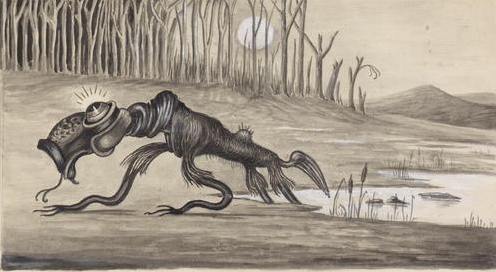What do they Believe?
Some well-known ancestral beings among these people is Bunyip and Yowie. In the western desert areas of Central Australia were traditional healers also known as Ngangkari and they were highly respected men and women who were also recognised as custodians of dreamtime stories and they served as healers among the people.
The aboriginal people have their own beliefs about death and consider this experience to be merely a transition into another life and the afterlife is very similar to their lives before death.

Those who are believed to posses more than one spirit or soul will enjoy the same afterlife than normal people. The belief regarding death maintains that a person will continue an existence somewhat like their earthly life and they will fulfill all of the roles of their earthly existence.
When a person departs this life, he may return to a place where spirit children is waiting to be reborn, or alternatively part of him may depart for the land of the dead or their afterlife essence may merge with great ancestral beings. There is another possible scenario where a part of the deceased person may act as a spirit trickster.
It is widely assumed that census information could help to identify how far spread traditional indigenous beliefs is compared to other mainstream religions. The problem however, is that the official census in this country does not acknowledge indigenous beliefs as a religion. This fact is easily established by looking at the 2001 census which only make mention of religions such as Baptist, Catholic, Greek orthodox, Anglican, Islam, Uniting church, Lutheran, Buddhism and Presbyterian. The census system is therefore unlikely to reveal any data regarding Aboriginal beliefs because mention is only made of the mainstream religions.
It is worth noticing that in the census of 1991 over 70% of aboriginal people indicated an affinity with Christianity. This evidence was again confirmed in the 1996 census where once again aboriginal people indicated that they indeed hold themselves to some form of Christianity.
Aboriginal Music
Over the years aboriginal people have developed a number of musical instruments as well as several styles of music. Among Australian aboriginals the didgeridoo is the recognised national instrument of these people. The musicians were mostly men and they were Arnhem land people such as the Yolngu.
History seems to indicate that it was used by the people of Kakadu for as long as 1500 years.
A more universal instrument among aboriginal people is the clapping sticks which is primarily used to keep a steady rhythm. In the last couple of years, it was increasingly seen that aboriginal people became involved in other music forms such as reggae, rock and roll and hip hop. One of the well-known modern bands playing in a style similar to aboriginal rock is Yothu Yindi.
The state and federal governments have created the aboriginal center for the performing arts in 1997. The primary purpose of this initiative was to was to carefully nurture and preserve aboriginal talent and music including all genres and styles from contemporary to traditional music.
